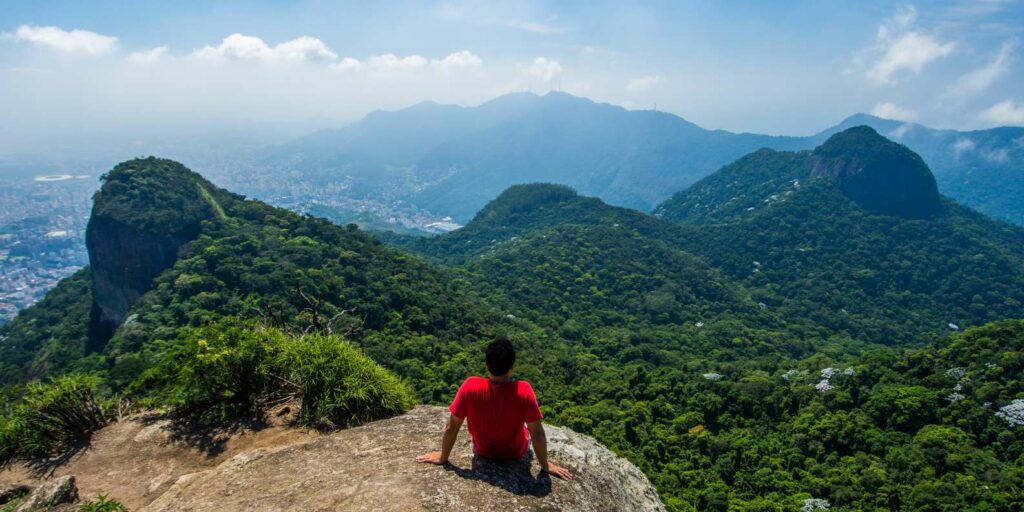Exploring Tijuca National Park: Rio de Janeiro’s Verdant Oasis

Nestled within the bustling metropolis of Rio de Janeiro, Tijuca National Park stands as a lush oasis of biodiversity, offering respite from the urban sprawl and a haven for nature lovers and outdoor enthusiasts alike. Spanning over 32 square kilometers, this sprawling park is one of the largest urban forests in the world, boasting pristine rainforest, cascading waterfalls, and panoramic vistas that showcase the breathtaking beauty of Brazil’s natural landscapes. Join us on a journey to discover the wonders of Tijuca National Park and uncover the secrets hidden within its verdant depths.
A Green Jewel in the Heart of Rio
Tijuca National Park holds a special place in the hearts of cariocas (residents of Rio de Janeiro) and visitors alike, providing a welcome escape from the hustle and bustle of city life. Established in 1961, the park was created to protect the remnants of the Atlantic Forest that once covered much of the region and to preserve its rich biodiversity for future generations.
Today, Tijuca National Park serves as a vital green lung for Rio de Janeiro, helping to mitigate the effects of urbanization and providing crucial habitat for a diverse array of plant and animal species. Its towering trees, lush undergrowth, and abundant wildlife offer a glimpse into the natural wonders that once blanketed the region, providing a sense of tranquility and connection to the natural world amidst the chaos of the city.
A Hiker’s Paradise
One of the best ways to experience the beauty of Tijuca National Park is on foot, with a network of well-maintained trails that wind their way through the forest, leading to scenic viewpoints, hidden waterfalls, and historic landmarks. Whether you’re a seasoned hiker or a casual nature lover, there’s a trail for every skill level and interest in Tijuca National Park.
One of the park’s most popular hikes is the trail to the summit of Pico da Tijuca, the highest peak in the park, which offers sweeping views of Rio de Janeiro and the surrounding coastline. Along the way, hikers can admire towering trees, colorful orchids, and playful monkeys that call the forest home, immersing themselves in the sights and sounds of the Atlantic Forest.
For those seeking a more leisurely stroll, the trail to the Cascatinha Waterfall provides a tranquil escape into the heart of the forest, with cascading waterfalls, babbling streams, and lush vegetation creating a picturesque backdrop for a relaxing hike. And for history buffs, the trail to the ruins of the Mayrink Chapel offers a glimpse into the park’s past, with crumbling stone walls and moss-covered statues providing a haunting reminder of days gone by.
Biodiversity Hotspot
Tijuca National Park is home to an astonishing array of plant and animal species, many of which are found nowhere else on Earth. The park’s diverse habitats, ranging from dense rainforest to rocky outcrops, support a wide variety of flora and fauna, including rare orchids, towering palms, and elusive mammals such as the golden lion tamarin and the South American coati.
Birdwatchers will delight in the opportunity to spot colorful avian species such as toucans, parrots, and hummingbirds flitting among the treetops, while nature enthusiasts can marvel at the park’s impressive array of butterflies, frogs, and other small creatures that thrive in its lush undergrowth.
Conservation and Sustainability
In addition to its role as a recreational and educational resource, Tijuca National Park plays a crucial role in conservation efforts aimed at preserving the region’s biodiversity and mitigating the impacts of climate change. The park’s management practices prioritize sustainable development and environmental stewardship, with initiatives focused on reforestation, wildlife monitoring, and community engagement.
Visitors to Tijuca National Park can learn about these efforts firsthand at the park’s visitor centers and interpretation sites, where exhibits, guided tours, and educational programs highlight the importance of conservation and the role that each individual can play in protecting our planet’s natural heritage.
Conclusion
In conclusion, Tijuca National Park is a natural treasure that offers a glimpse into the beauty and biodiversity of Brazil’s Atlantic Forest. From its towering trees to its hidden waterfalls, the park’s pristine landscapes inspire wonder and awe, inviting visitors to explore, discover, and connect with nature in the heart of Rio de Janeiro. So, whether you’re a hiker, a nature lover, or simply seeking a moment of tranquility amidst the chaos of the city, be sure to add Tijuca National Park to your list of must-visit destinations in Rio de Janeiro.




